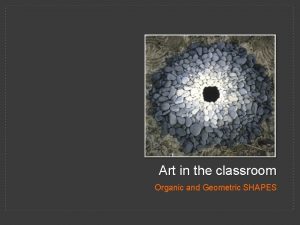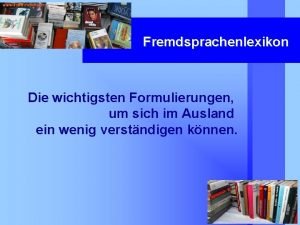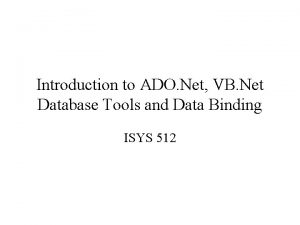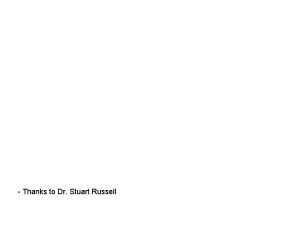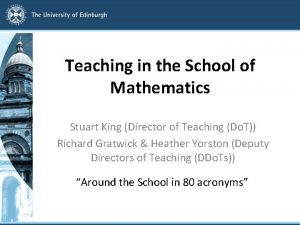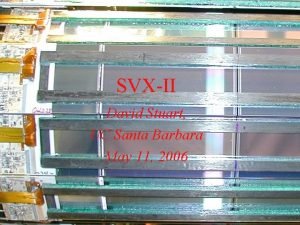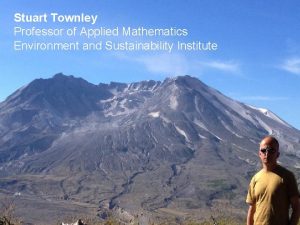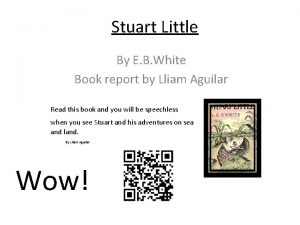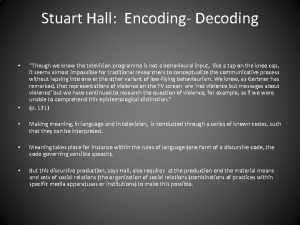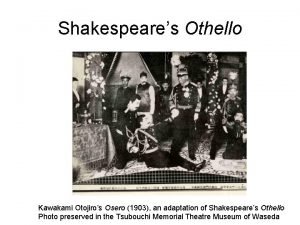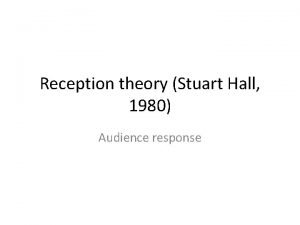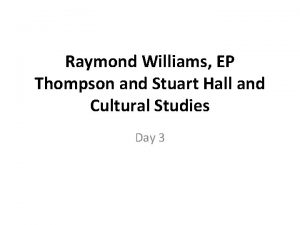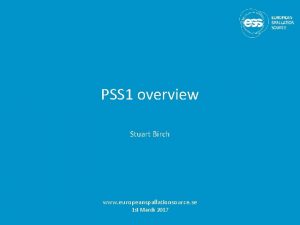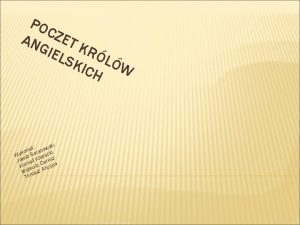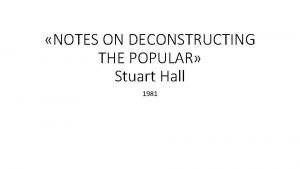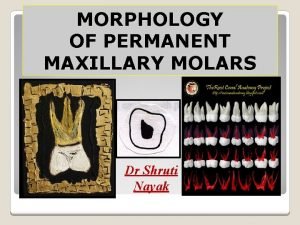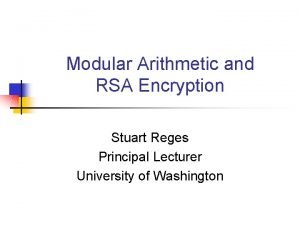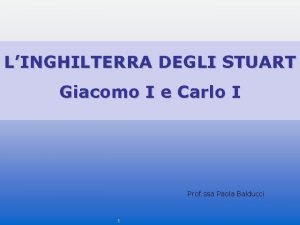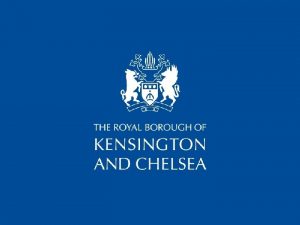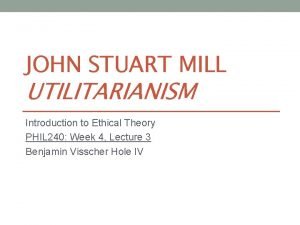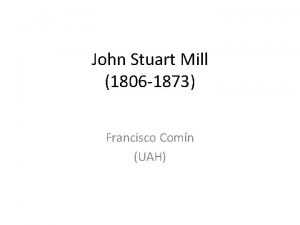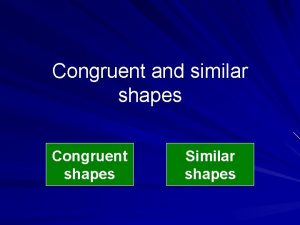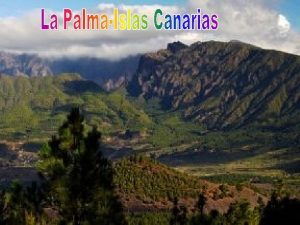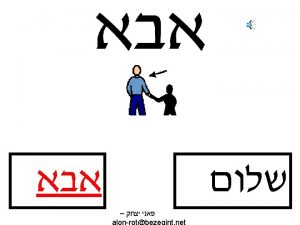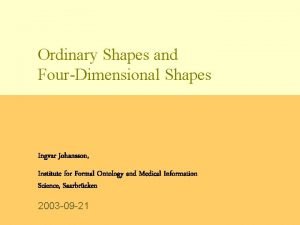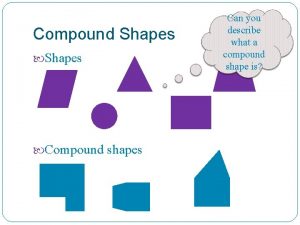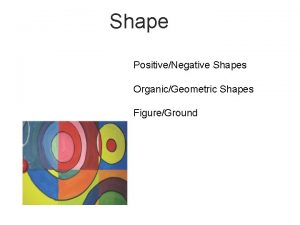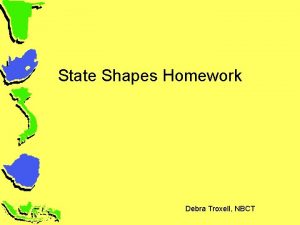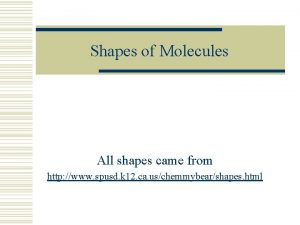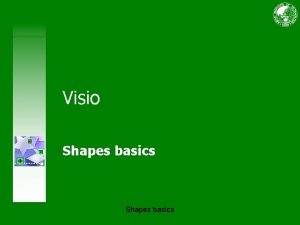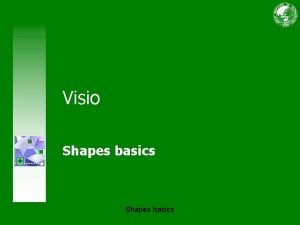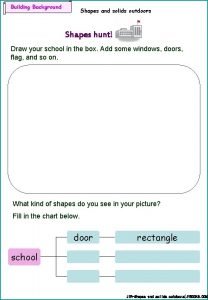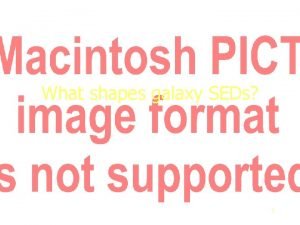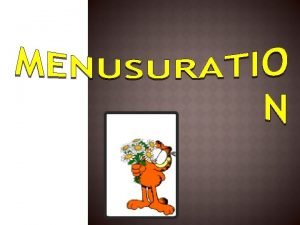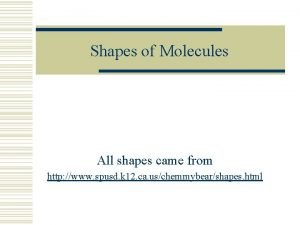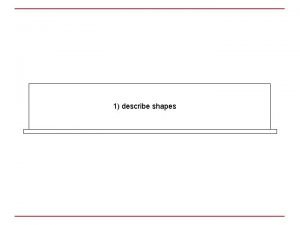Natural Shapes Stuart Smith stuart smith 3comcast net

![Scientific Modeling from Scratch • Wolfram[1], Langlet[2], Zaus[3] propose new ways to do scientific Scientific Modeling from Scratch • Wolfram[1], Langlet[2], Zaus[3] propose new ways to do scientific](https://slidetodoc.com/presentation_image_h/1dc9b35ae18b342cd904cc7998c9bcd9/image-2.jpg)




















![References [1] Stephen Wolfram. A New Kind of Science. Wolfram Media (2002). [2] Gérard References [1] Stephen Wolfram. A New Kind of Science. Wolfram Media (2002). [2] Gérard](https://slidetodoc.com/presentation_image_h/1dc9b35ae18b342cd904cc7998c9bcd9/image-23.jpg)

- Slides: 24

“Natural” Shapes Stuart Smith stuart. smith 3@comcast. net
![Scientific Modeling from Scratch Wolfram1 Langlet2 Zaus3 propose new ways to do scientific Scientific Modeling from Scratch • Wolfram[1], Langlet[2], Zaus[3] propose new ways to do scientific](https://slidetodoc.com/presentation_image_h/1dc9b35ae18b342cd904cc7998c9bcd9/image-2.jpg)
Scientific Modeling from Scratch • Wolfram[1], Langlet[2], Zaus[3] propose new ways to do scientific modeling: • Little or no use of continuous mathematics • Emphasis on Boolean operations • Extensive use of visualization

Visualization • Ubiquitous graphics programs allow informative and attractive presentation of the results of the new methods. • Wolfram’s A New Kind of Science a magisterial exposition of the new methods AND a great “coffee table” art book • Langlet’s paper Building the APL Atlas of Natural Shapes also shows the artistic potential of the new methods.

Wolfram vs. Langlet • Wolfram shows successive states in the evolution of a system, with time increasing down the image. • Langlet emphasizes the final state of a given process and presents it as a mandala, snowflake, or other symmetrical form.

Typical Wolfram Image

Typical Langlet Image

The Bit-String • Essential common feature of both Wolfram and Langlet: generation of a bit-string • Wolfram renders each bit-string as a line of black and white squares. Successive lines together form a rectangular picture of the system’s evolution. • Langlet repeatedly modifies one string and then uses the final modification to direct a graphical “turtle” to trace out the contours of the result image.

Ad Hockery in Langlet’s Approach • Wolfram’s method is simple and consistent, and it has plausible connections with actual natural processes • Langlet’s method involves several ad hoc modifications of the bit string that are hard to justify from a “natural” point of view. • Langlet also offers an “irregularity” option to obtain additional variety in the images generated. This is not only ad hoc, but it also requires floating-point arithmetic–a clear violation of Langletian principles (every operation must have an exact inverse).

Goal: generate Langlet’s pretty pictures with a consistent method • Retain Langlet’s geometric framework. • Substitute a version of Wolfram’s simple cellular automaton for Langlet’s L-system to generate the initial bit-string • Remove Langlet’s arbitrary bit-string modifications and “irregularity. ” • Allow the initial bit-string to be generated randomly. For complete consistency this can be done with the simple cellular automaton.

More on “Irregularity” • Wolfram’s simple cellular automaton can operate according to any of 256 different rules. • For many of these rules, step n in the evolution of the automaton cannot be calculated directly from the initial bit string. To obtain step n, it is necessary to calculate all of the preceding steps. • Therefore, there is no need for an “irregularity” feature to add variety or unpredictability. This feature is built right into the automaton.

Additional feature: color • Since the time of Langlet’s original paper, it has become trivial to render the images in color. • In Dyalog APL, the poly class will make sure that a sequence of points represents a closed contour and then render an image with userselectable line, fill, and background colors. • The same can be done in Mathematica, Matlab, and other contemporary programming languages.

Analogy to Spirograph™

Simple Images

More complex Images

…and everything in between.

Auditory display of input values • symmetry: the higher the order of symmetry the higher the frequency • rule: the greater the rule number the greater the depth of tremolo • length: the longer the contour bit-string the faster the rate of tremolo • duration: the greater the number of steps of the cellular automaton the longer the duration






Has the goal been reached? • We can make pretty pictures with Langlet+Wolfram, but… • Langlet wanted to show that the pictures somehow mirrored actual natural processes. This is doubtful. • What we have is an artistic diversion, a tool that can produce visually appealing patterns. • The programs are also a sales pitch for APL (Langlet constantly promoted the language). The main program is ~60 lines of APL code.
![References 1 Stephen Wolfram A New Kind of Science Wolfram Media 2002 2 Gérard References [1] Stephen Wolfram. A New Kind of Science. Wolfram Media (2002). [2] Gérard](https://slidetodoc.com/presentation_image_h/1dc9b35ae18b342cd904cc7998c9bcd9/image-23.jpg)
References [1] Stephen Wolfram. A New Kind of Science. Wolfram Media (2002). [2] Gérard Langlet. Building the APL Atlas of Natural Shapes. APL ’ 93 Proceedings of the International Conference on APL. New York, NY: ACM (1993). [3] Michael Zaus. Crisp and Soft Computing with Hypercubical Calculus: New Approaches to Modeling in Cognitive Science and Technology with Parity Logic, Fuzzy Logic, and Evolutionary Computing: Volume 27 of Studies in Fuzziness and Soft Computing. Physica-Verlag HD, 1999.

The End
 These are shapes that seem to follow no rules.
These are shapes that seem to follow no rules. Natural hazards vs natural disasters
Natural hazards vs natural disasters Natural capital and natural income
Natural capital and natural income Achmed lach net
Achmed lach net Ado.net vb.net
Ado.net vb.net What is ai?
What is ai? Stuart king edinburgh
Stuart king edinburgh David stuart ucsb
David stuart ucsb Stuart townley
Stuart townley Stuart little book summary
Stuart little book summary Stuart hall encoding
Stuart hall encoding Stuart family tree
Stuart family tree Stuart hall's theory
Stuart hall's theory Raymond james stuart
Raymond james stuart Stuart birch
Stuart birch Dynastia anglosaska
Dynastia anglosaska Stuart minty camden planning consultant
Stuart minty camden planning consultant Stuart hall notes on deconstructing the popular
Stuart hall notes on deconstructing the popular Maxillary 2nd molar
Maxillary 2nd molar Stuart reges
Stuart reges Abolizione monarchia inglese
Abolizione monarchia inglese Chelsea neighborhood watch
Chelsea neighborhood watch John stuart mill theory
John stuart mill theory John stuart mill (1806-1873)
John stuart mill (1806-1873) John stuart mill teoría
John stuart mill teoría
